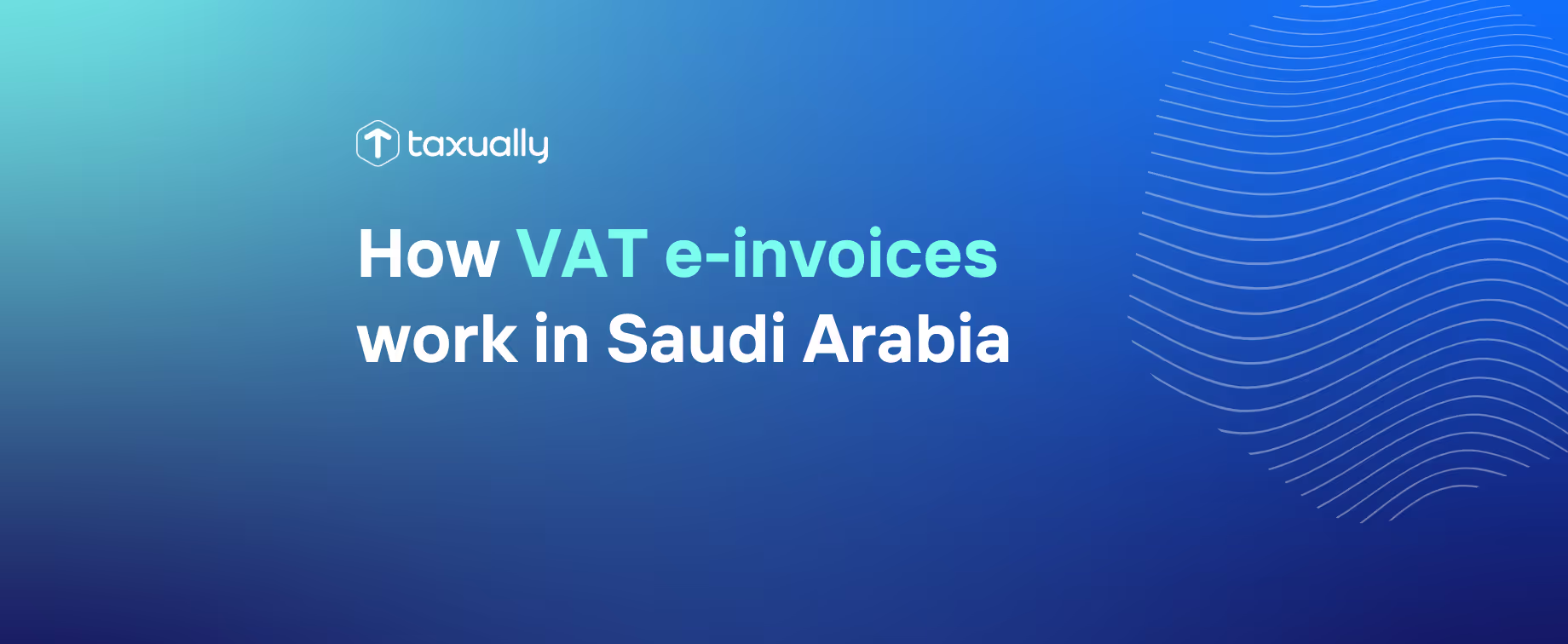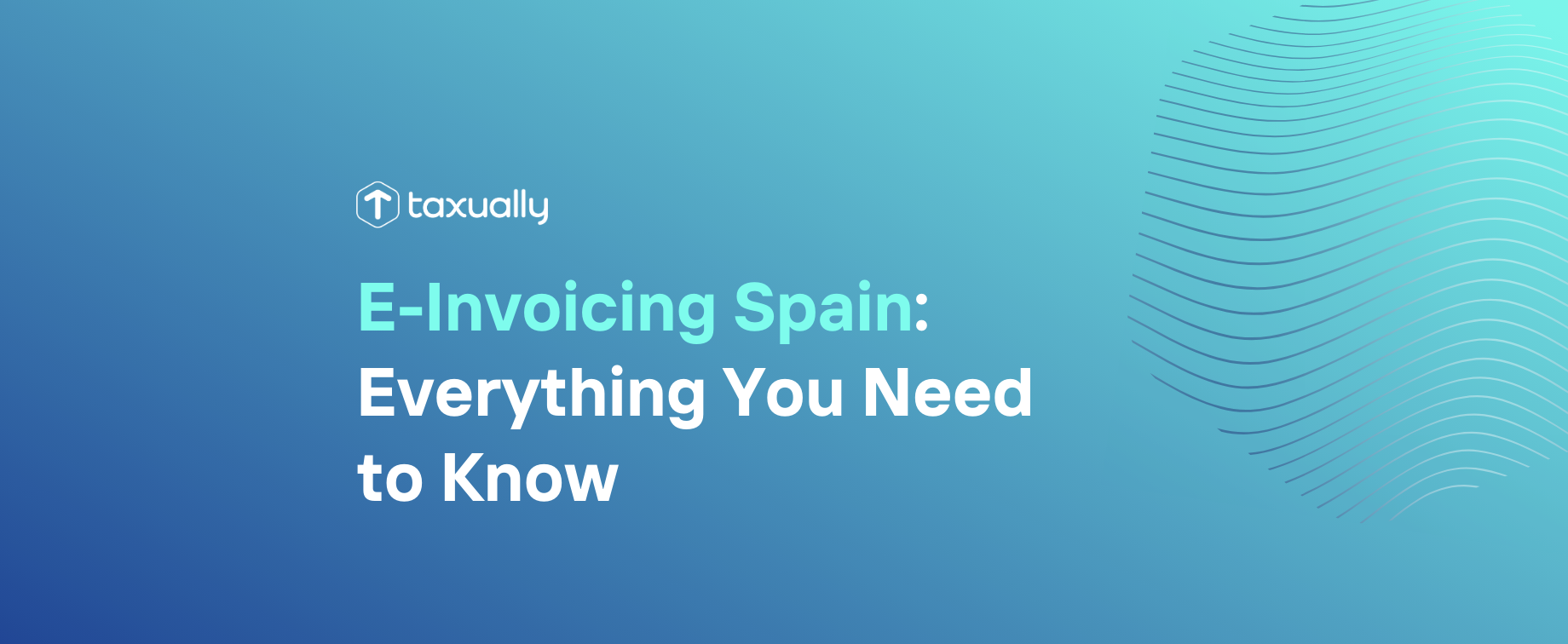Key takeaways
- Mandatory digital invoicing: Saudi Arabia’s ZATCA introduced e-invoicing in two phases (2021 and 2023) to modernize VAT compliance and improve transparency.
- Two e-invoice types: Standard e-invoices apply to B2B/B2G transactions, while simplified e-invoices are used for B2C sales, both requiring QR codes and Arabic formatting.
- Enhanced efficiency and control: E-invoicing reduces fraud, simplifies reporting, and promotes streamlined, accurate record-keeping for Saudi businesses.
E-invoicing was introduced by Saudia Arabia’s Zakat, Tax, and Customs Authority (ZATCA) in December 2021. Rolled out in two phases, the system has been designed to transform how businesses handle invoicing related to value-added tax (VAT).
E-invoices - what are they?
E-invoicing involves generating invoices electronically or digitally through specific e-invoicing solutions. These solutions enable the creation, access, and storage of invoices in electronic formats. E-invoicing can be facilitated through various platforms, including online cash registers, software installed on PCs, or cloud-based platforms.
It is important to note that a PDF or scanned copy of a paper invoice does not qualify as an e-invoice. Instead, an e-invoice must be produced directly through an e-invoicing system.
E-invoices in Saudi Arabia
Saudi Arabia has two types of e-invoices:
- Standard e-invoice: This type applies to business-to-business (B2B) and business-to-government (B2G) transactions. The process involves the seller creating the e-invoice and submitting it to ZATCA for approval. Once approved, the seller then forwards the e-invoice to the buyer, who can access it using a QR code.
- Simplified e-invoice: Typically used for business-to-consumer (B2C) transactions, this method requires the seller to generate the e-invoice and directly provide it to the buyer, who can access it through a QR code. The seller must also report the transaction to ZATCA within the stipulated timeframe.
These e-invoices must include certain information, such as date, seller’s details, buyer’s details, VAT number, information regarding goods or services sold, and amount.
Although e-invoices must be issued in Arabic, there is the option to include a second language on the e-invoice, such as English.
Once an e-invoice has been issued in Saudi Arabia, it cannot be altered. However, sellers can adjust quantities or prices by issuing a debit or credit note linked to the original e-invoice.
Introduction of e-invoices in Saudi Arabia
E-invoicing is mandatory in Saudi Arabia and has been implemented in two stages. Phase 1 began on December 4, 2021, requiring applicable taxpayers to issue and store e-invoices compliant with ZATCA standards, without having to report to the portal. Phase 2 was introduced on January 1, 2023, and necessitates that taxpayers integrate their invoicing systems with ZATCA's Fatoora portal, rolling out gradually based on annual taxable revenue with a 6-month notice for integration.
The implementation of e-invoicing in Saudi Arabia marks a significant transformation in the administration of VAT compliance. By mandating the use of e-invoices, the Zakat, Tax, and Customs Authority (ZATCA) aims to enhance the efficiency and transparency of tax transactions while minimizing fraud. As businesses adapt to this new system, they are likely to benefit from streamlined processes and improved record-keeping, helping their business grow and succeed in the long run.
Frequently asked questions
New Year's Day - 1/1/2024Memorial Day - 5/27/20244th of July - 7/4/2024Labor Day - 9/2/2024Thanksgiving Day - 11/28/2024Day after Thanksgiving - 11/29/2024Christmas Eve - 12/24/2024Christmas Day - 12/25/2024
What is e-invoicing in Saudi Arabia?
E-invoicing is the digital creation, storage, and exchange of VAT invoices using approved electronic systems, replacing traditional paper-based invoicing.
Who introduced e-invoicing and when?
The Zakat, Tax, and Customs Authority (ZATCA) introduced e-invoicing in December 2021 to improve VAT compliance and transparency.
What are the two types of e-invoices?
- Standard e-invoice: For B2B and B2G transactions, submitted to ZATCA for approval before being sent to the buyer.
- Simplified e-invoice: For B2C sales, issued directly to the customer and later reported to ZATCA.
Is e-invoicing mandatory?
Yes. E-invoicing became mandatory in two phases: Phase 1 (December 2021) required compliant e-invoice generation, and Phase 2 (January 2023) required integration with ZATCA’s Fatoora portal.



















